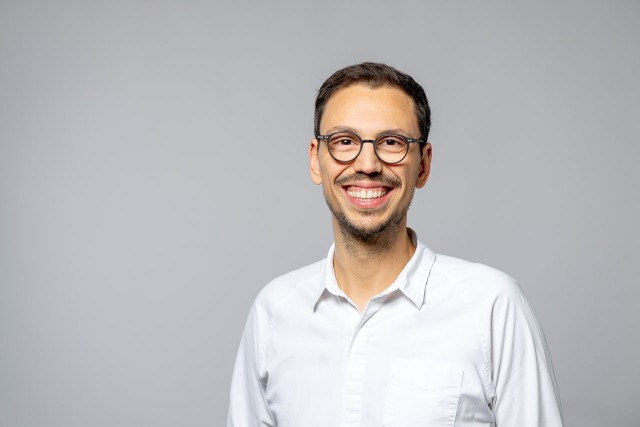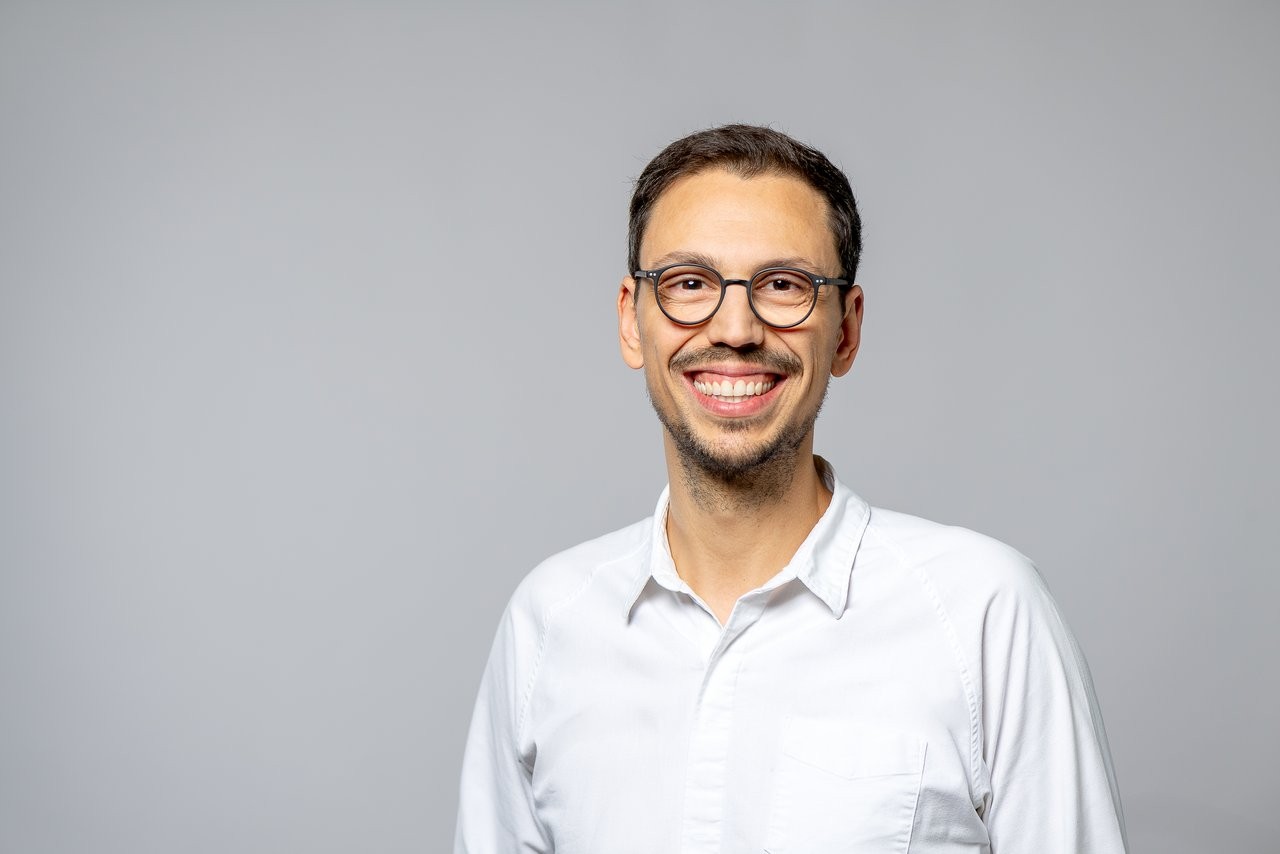11 April 2025
From simple to high-tech: Florian Dirnberger uses sticky tape to analyse magnetic and optical changes in two-dimensional semiconductors
Last October, Dr. Florian Dirnberger joined TUM School of Natural Sciences as an independent Emmy Noether junior research group leader. In Spring 2025, he also joined MCQST and is currently building up his group and building the lab facilities for his research. Dirnberger was recently featured in an interview in the NAT Featured series.
NAT: How did you end up in Munich? Tell us about your career so far.
FD: I grew up in Bavaria, studied physics and obtained a PhD at the University of Regensburg in 2019. Then I received a Walter Benjamin Fellowship from the German Research Foundation to investigate novel light-matter interactions at the City College of New York as a postdoc.
NAT: That means you were in New York during the pandemic, which was not an easy time to do research in a lab anywhere in the world. What were you able to accomplish during this incredibly challenging time?
FD: I was very lucky. My local and international collaborations were valuable and made work possible. Despite the limitations, I still managed to do lots of good research. New York got hit pretty hard by the first wave. For a while, it was the "capital of COVID", which was really scary but somehow also an interesting life experience.
NAT: After New York, you came back to Germany in 2023 and worked as a postdoc at Dresden University of Technology. Is that where you came up with the ideas for this Emmy Noether research group?
FD: No, the Emmy Noether project is based on developments that happened while I was still in New York. Two-dimensional magnetic materials had just been discovered around that time, and some of them turned out to have very interesting optical properties. They host optical quasiparticles called excitons, which really fascinated me because so little was known about their properties at the time. So, I just threw all of my previous plans overboard and focused on that. Every new experiment on this material, called CrSBr, turned up something interesting. It was very productive and creative, and people were really excited about the results.

FD: Some of these two-dimensional magnetic materials, CrSBr, can emit and absorb light of specific colors, but that depends on their magnetic properties. This creates a connection between optical and magnetic properties that is really interesting to me. Applications that are typically based on semiconductors, like solid-state lasers or LEDs, could benefit greatly from typical functionalities of magnets, for example, information storage.
NAT: What would be the implications of your research for everyday life?
FD: A major goal of my Emmy Noether project is to realize the first magnetic laser. Ideally, such a device could help integrate future quantum computers into existing optical communication networks. For that, photons with microwave frequencies, which are the frequencies at which quantum computers work, must be converted into photons with optical frequencies that are compatible with optical fibers.
NAT: Why did you decide that TUM was the best place to do start your research group?
FD: TUM is one of the best institutions for fundamental physics research in Germany. I really enjoy having experts in so many disciplines around.
NAT: You recently published two papers in Nature Materials, more or less with different research collaborators. What is similar or different about these two studies?
FD: In both studies, we investigated the optical properties of the layered magnetic material CrSBr, so that’s what they have in common. The first study found that some of the material’s excitons (optical quasiparticles) are restricted to an almost atomically thin layer at the surface of the crystal because the magnetism in the layer below strictly prevents the excitons from leaking into the center of the crystal.
In the other study we found that, also in the center of the crystal, these excitons are pretty much restricted to a single layer. But once you start to destroy the magnetism, for example, by increasing temperature, they start to expand throughout the crystal. So, it's really about the idea that magnetism is a way to confine optical quasiparticles like these excitons, a conclusion that both studies arrived at using very different techniques, such as linear near-infrared reflectance and mid-infrared pump-probe spectroscopy.
Apart from the science, it was also exciting to work in such a huge collaboration. Together, we had about 30 researchers across the globe work on these two papers. And despite the challenging logistics of that, across different countries, and in two separate studies, we cooperated and wrote two complementary studies.
NAT: How did that come about? Why are you one of only 4 authors on both Nature Materials papers?
FD: The experiments for both studies were done in New York, Dresden, and Regensburg, all places I worked at over the last few of years. I am well-connected through active collaborations. I think that made it easier to manage communication between the different parties that were involved.
NAT: When it comes to career development, publications and external funding are both necessary for success. What is important to know about the differences between writing a funding application and writing a paper? Any advice for other junior researchers?
FD: Well, I think it's really important to learn how to structure research ideas in a way that even people who are not field experts can understand the core aspects. To me, there's something aesthetic about trying to get to the bottom of an idea. But it's also just incredibly important to get feedback and advice from other scientists, and a chance to learn how they're doing it. Everybody develops their own style, but the community is genuinely very supportive. I received lots of support every step of the way.
NAT: In setting up your new lab, what specific equipment are you purchasing now?
FD: We're getting equipment to set up a flexible but powerful optical experiment. For that, we need ultrafast laser pulses, a detector, and a magneto-optical cryostat.
NAT: You have two PhD students starting on the 1st of March. So, what's next?
FD: I'm hoping that we can realize the ideas from of the Emmy Noether project. I can't wait to get the experiments running to test them. You think about the ideas for so long when preparing a grant application for a project, so you're just extremely curious to know if they are realistic. Whether there's new things that pop up, some things certainly won't go as planned, others might bring big surprises.
NAT: What would be the ultimate question you would like to answer during your career?
FD: What happens to magnetism when excitons undergo a process called Bose-Einstein condensation. This process happens very fast. It locks the phase of the electrons but I have no idea what to expect about their magnetic moments. I think we could have chance at finding this out when studying magnetic lasers. It's a similar process.
Article originally published on the
TUM NAT School website.
Further Reading
- Florian Dirnberger's research website: EQM Research Group
- . Shao, Dirnberger, et al. Nat. Mater. 24, 391–398 (2025) DOI: 10.1038/s41563-025-02129-6
- Controlling Coulomb correlations and fine structure of quasi-one-dimensional excitons by magnetic order. Liebich, Dirnberger, et al. Nat. Mater. 24, 384–390 (2025). DOI: 10.1038/s41563-025-02120-1
